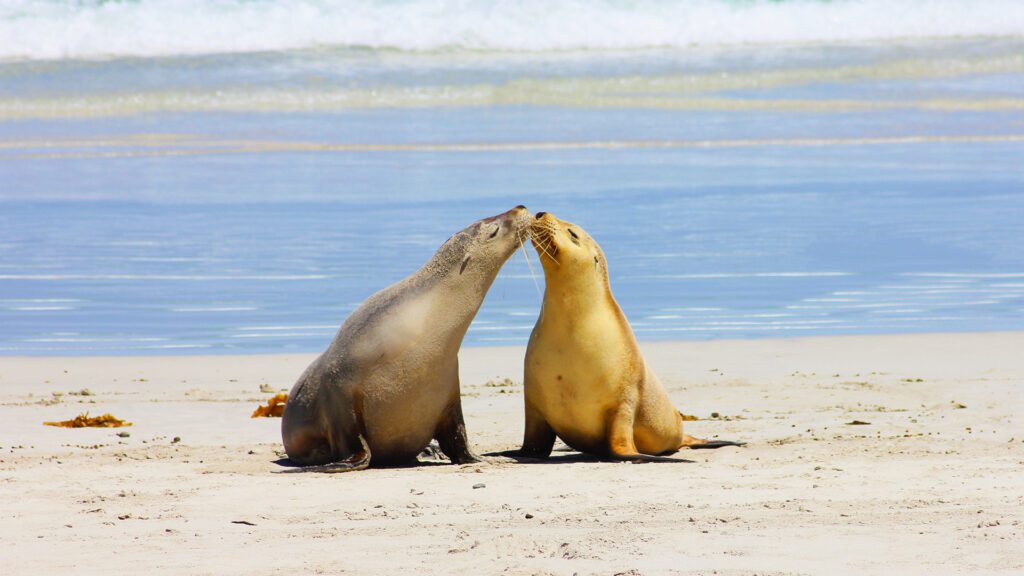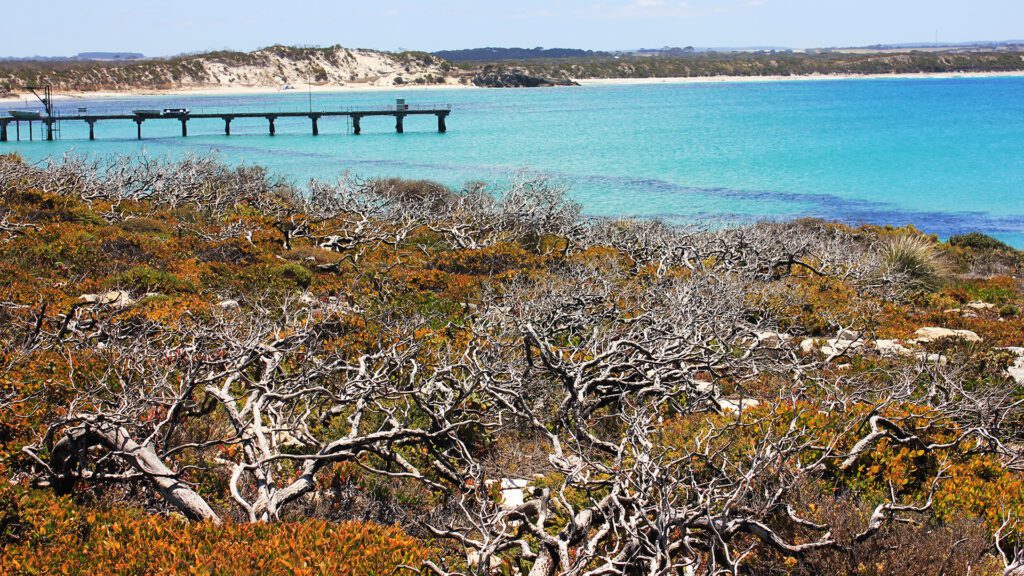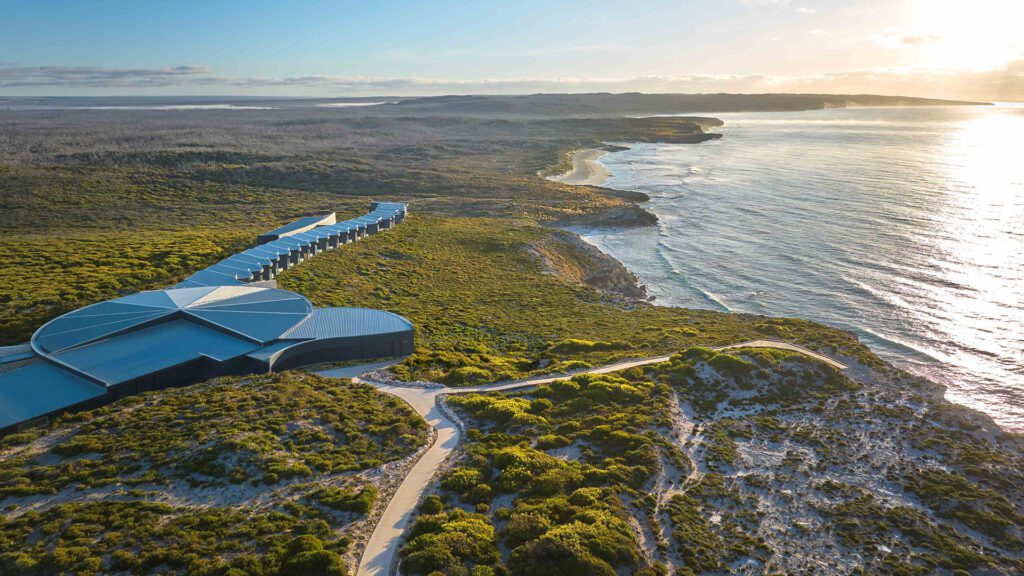The Remarkable Rocks
FOUR YEARS on from the devastating bushfires of 2020, Traveltalk’s Jon Underwood visits Kangaroo Island and reports on how one of this country’s most iconic destinations is rising from the ashes.
The pictures were beamed around the world…and they were heartbreaking.
As Kangaroo Island burned, human and animal life was lost, hundreds of thousands of hectares were torched and a whole community devastated.
According to Tourism Kangaroo Island, the bushfires of 2019/2020 burned 211,474 of the island’s 440,500 hectares. Some 96 per cent of the internationally renowned Flinders Chase National Park was consumed by fire.
Homes and businesses were destroyed, along with forestry, crops, machinery and infrastructure.
But with the fortitude, resilience and ingenuity that (some would say) only a woman can possess, Mother Nature has found a way to revive, recover and replenish.
I visited the island last month during a Holland America cruise and can report that spirits are high, wildlife is flourishing and tourism recovery is well under way.
The island has bounced back so well, in fact, that both the New York Times and Lonely Planet have listed it in their respective top 10 places to visit in 2024.
“Visitors are extremely important to our island’s community,” Megan Harvie, Regional Tourism Manager, Kangaroo Island Tourism Alliance, told Traveltalk.
“Tourism supports one in three jobs here and with a population of 5,000 people, that’s a significant amount.
“Straight after the bushfire we went into COVID lockdown. For many on the island, this gave us the space to grieve, rebuild, improve and be with our families, straight after a pretty horrific time.
“When we reopened after COVID, South Australia really supported the island incredibly – we were their ‘overseas’ holiday that they could not get anywhere else.
“We are continuing that building momentum, especially over our shoulder seasons, which in my opinion are the best times to travel here!”


AUSTRALIA’S GALAPAGOS
The third largest island in Australia, Kangaroo has more than 500 kilometres of coastline and beaches.
Its nickname of ‘Australia’s Galapagos’ is well founded with 18 species of terrestrial mammals, 18 reptile species, six frog species, 231 recorded fish species and five kinds of seagrass all calling the 4,500 square kilometre destination home.
Add to that 891 native plant varieties, more than 200 different types of birds and the purest remaining strain of Ligurian Bees in the world and it’s a wonder Sir David Attenborough isn’t a permanent resident.
My full-day shore excursion started on the east coast in Penneshaw and began with a drive across the island.
Through the coach window I could clearly see how the native vegetation is steadily reclaiming land scorched by fires believed to have been started by lightning. Let’s all pray it really doesn’t strike twice.
Burnt trees are everywhere but they are slowly being masked by fresh green growth. Kangaroo numbers are nowhere near pre-bushfire levels but we still spotted several from the coach, along with echidna and a goanna.
However, it was during a lunch stop at the Kangaroo Island Holiday & Caravan Park in Karatta that I witnessed one of Australia’s real showstoppers.
Up in the trees we spotted not one, not two, but three koalas, my first ever sighting of these cuddly cuties in the wild. While one was sound asleep, the other two gazed down in mild curiosity as we tourists took a gazillion photos.
As wildlife encounters go, it perhaps didn’t match the adrenalin rush of seeing a leopard in South Africa…but it was still very special.
“Our diversity will take its time to build back to what we had pre-fire, but the animal life is certainly back, just not in the numbers we saw before the fire,” comments Ms. Harvie.
Our journey took us to some remarkable places, including the Remarkable Rocks and Admiralty Arch in the Flinders Chase National Park. We also stopped at Pennington Bay and Vivonne Bay, once voted the best beach in Australia.
But for many animals are the main drawcard of the island and at Seal Bay we encountered (wait for it), the third largest colony of Australian sea lions in the country.
What followed was a magical half hour observing and photographing these delightful yet endangered creatures. Most of them were asleep as they spend three days at sea constantly diving for food so are understandably knackered when they get to shore.
Yet one belligerent alpha male was awake enough to warn off his younger males and you could hear the squeals of delight from the watching public above the surf noise when a mother and cub enjoyed a little cuddle and a kiss.
Travel was made for such moments as these.

BUILDING FOR THE FUTURE
The rebuild of visitor facilities on KI is nearing completion, with the final piece, the Flinders Chase Visitor Centre, due to be open this Easter while the world-renowned Southern Ocean Lodge reopened in December.
The Cliffs Kangaroo Island destination golf course will be opening mid-2025 and two new ferries are due to start operations with SeaLink Kangaroo Island in early to mid-2025.
“This will improve access to the Island and really change things for business and visitors. International visitors are returning and numbers are building,” says Ms. Harvie.
“There is excitement building, but also lots of planning happening so that we ensure that we keep Kangaroo Island special for what it is.”
THE FINAL WORD
Allegedly there’s a bumper sticker you’ll spot on some island vehicles which states: “If you live on Kangaroo Island, you are better off than 99.9% of the world’s population.”
Having spent time there, it’s really hard to argue with that.

Southern Ocean Lodge



